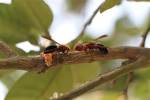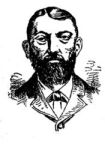One of the great delights of being a small boy growing up in a rural area in autumn was access to the plentiful supply of conkers. The hardy nuts from the horse-chestnut tree, encased in their knobbly green husk, looking like a piece of medieval weaponry, handily fell to the ground and were eagerly harvested by we boys, anxious to reconvene our games of conkers rudely interrupted the previous winter by the dearth of fresh supplies.
Having garnered our conkers, we released them from their cases and eagerly inspected their quality. Exercising a high degree of quality control we would select a handful to represent our cause in the forthcoming bouts. A hole from top to bottom was made in each conker and a boot lace threaded through and knotted at the bottom. These simple preparations completed, you were ready to challenge all-comers in the school playground.
Rules were simple. You took turns at hitting your opponent’s conker with your own and the winner was the one whose conker emerged unscathed from the contest. Assuming you were victorious your conker assumed the score of your opponent’s conker plus one. If both conkers were virgins, then the winner’s conker was a oner.
Of course, where there is fame to be won, it was not unknown for some boys to seek to gain an advantage by baking their conkers in an oven or pickling them in vinegar to harden their exterior. Anyone caught cheating was immediately sent to the conker version of Coventry.
The ancient sport of conkers has recently attracted the attentions of the ‘Elf and Safety brigade. Around this time of year you read of schools banning conkers for fear that the little darlings will injure their knuckles from a misplaced shot or fragments will get in their eyes. Some more tolerant schools require their little darlings to wear goggles – advantage, for once, to the junior spectacle wearers who normally are subjected to ridicule.
It warmed the cockles of my heart the other day to read a report of the 47th World Conkers Championships which were held at the Shuckburgh Arms in Southwick in Northamptonshire. Despite contestants from 15 countries the final was contested by two locals, Simon Cullum and Dave “the Pig” Bloomfield, with Cullum prevailing. To prevent cheating the conkers are assigned to the contestants by the organisers.
This quaint English competition was first held in 1965 in the village of Ashton near Oundle and involved a group of frustrated anglers whose fishing trip had fallen foul do f the weather. As they say, from little acorns, mighty oaks do grow.
Another fascinating insight into our quaint and marvellous land!






